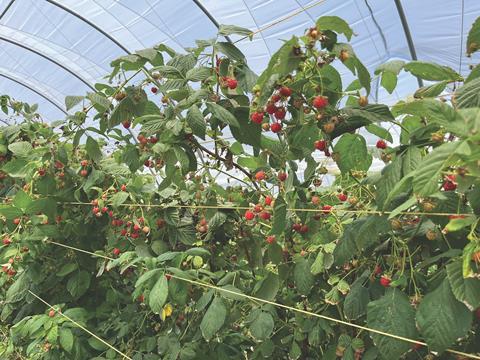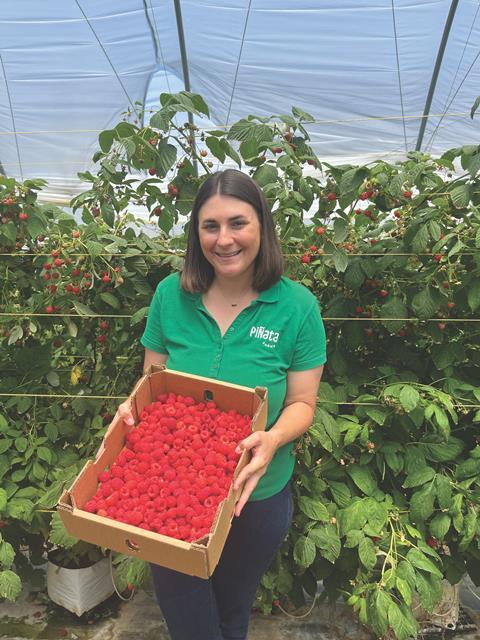Piñata Farms sees growth potential for Australia’s berry category, calling on industry to commit to higher quality fruit, improved cold chain processes and a better retail offering
From its beginnings, Piñata Farms has prioritised quality and flavour.

The fourth-generation family-owned business was instrumental in the growth of Australia’s pineapple industry when brothers Gavin and Stephen Scurr brought two MD2 variety pineapple tops home from a pineapple conference in Hawaii.
“They brought them in, quarantined them, and they became the basis of the hybrid pineapple industry in Australia now,” says sales and marketing manager Rebecca Scurr. “Before then, most of Australia’s pineapples were Smooth Cayenne variety which was canned.”
In the early 2000s, Piñata expanded its offering beyond pineapples to integrate strawberries, Honey Gold mangoes and later raspberries into the mix.
“My family’s passion has always been around great eating fruit,” Scurr says.
Varietal development
In 2018 Piñata entered into a joint venture with global varietal marketer and developer, BerryWorld, to create the BerryWorld Australia entity.
Piñata is currently solely responsible for testing new BerryWorld varieties under Australian conditions.
“What we wanted to do was use our growing expertise to work out how to grow the BerryWorld varieties best in Australian conditions, and then go to the market, to third party growers, to say this is why they’re spectacular, and this is how to grow them,” Scurr says. “It’s one thing to have an amazing variety, but fruit is finicky, especially raspberries, you have to know exactly how to grow that particular variety.”
Of the BerryWorld genetics, Piñata currently grows Diamond Jubilee raspberries and Sweet Eve strawberries, with others in the pipeline.
“There’s a pretty significant BerryWorld breeding programme in Spain, and that’s the most similar climate to us here, where they grow winter berries,” Scurr says. “Viva is one that we trialled this year on the Sunshine Coast and that went really well. The flavour was unbelievable with a more traditional summer berry look.”
But trials don’t always lead to commercial production.
“We’ve had really amazing eating varieties for a long time. We have just really struggled to make them yield even close to viable during the winter season,” Scurr explains.
“It’s extremely rare that the highest yielding crop would be your tastiest crop – they don’t really seem to go hand in hand – and we grow for flavour, we won’t grow something if it doesn’t eat amazingly. But, it also has to be commercially viable.”
Food chain

While genetics are evidently important, Scurr says it’s only one of the contributing factors to producing quality fruit.
“Our philosophy in everything we do is not to be the biggest, but it is to be the best and it is to lead the way in quality and in variety development,” she says. “But one thing we’re really, really passionate about on berries is the supply chain process.”
Piñata Farms is currently the only Australian berry producer that uses heat sealing in its packaging process, according to Scurr.
“There’s a couple of really big benefits to heat sealing,” she says. “One is there’s immediately 30 per cent less plastic per gram of fruit. The other one is that, in the field, you’re picking them into an open punnet and then they’re straight into a quick-chill cold room.”
By packing into open punnets heat can escape as it moves to the packing shed and through the blast chiller. This type of chiller can get fruit from field temperature (sometimes over 30°C) to below 10°C in approximately 20 minutes.
“We don’t do our second quality check, heat seal, metal detect or check weigh on any punnets until they are below 10°C,” Scurr says. “That is the biggest thing we can do for longevity in the consumer’s fridge. [Piñata berries] may not look any different [to another grower’s] today, or even tomorrow, but they will absolutely look different five days from now.”
Scurr says she wants more Australian growers to take up the same cooling process.
“I would love everybody to go into a store and be able to buy a BerryWorld raspberry and have a really amazing experience,” she says. “In reality, we don’t grow enough to have our raspberries in every single supermarket fridge in Australia. But if I know that people are going in and having an amazing experience with any raspberry, that’s amazing for our category.”
Read the full version of this story and more about Australia’s berry sector in the Summer edition of Produce Plus Magazine. Subscribe HERE.



